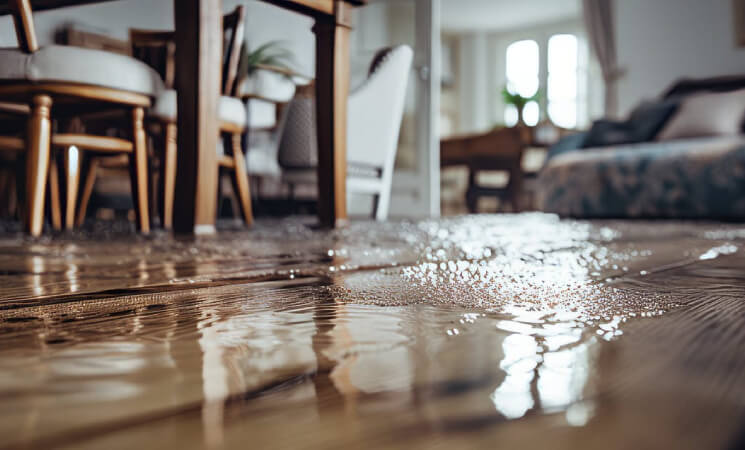Water damage is not limited to the interior of your home. The exterior of your property is also susceptible to water-related issues that can compromise its structural integrity and aesthetics. In this blog post, we will explore the topic of water damage on the exterior of your home. We will discuss the common causes of exterior water damage, signs to look out for, and effective measures to prevent and address such issues. By understanding and proactively addressing water damage on the exterior, you can safeguard your home and maintain its value and curb appeal.
Faulty Gutters and Downspouts
Properly functioning gutters and downspouts play a vital role in channeling rainwater away from your home. When these components become clogged, damaged, or improperly installed, they can lead to water pooling, overflowing, or spilling near the foundation. This can result in water seeping into the exterior walls, causing damage over time. Regularly inspect and clean your gutters, ensuring they are free from debris and securely attached. Redirect downspouts away from the foundation to prevent water from accumulating near the structure.
Damaged or Inadequate Siding
Cracked, deteriorated, or improperly installed siding can allow water to penetrate the exterior of your home. This can lead to rot, mold growth, and other structural issues. Regularly inspect your siding for signs of damage, such as cracks, gaps, or peeling paint. Address any issues promptly by repairing or replacing damaged sections of siding. Ensure that the siding material is appropriate for your climate to withstand moisture and prevent water infiltration.
Insufficient or Damaged Caulking
Caulking acts as a protective barrier against water intrusion around windows, doors, and other exterior openings. Over time, caulk can deteriorate, crack, or peel, compromising its effectiveness. Inspect the caulking around windows, doors, vents, and other penetrations. If you notice any gaps or signs of deterioration, remove the old caulking and apply a fresh bead of high-quality waterproof caulk. This will help seal gaps and prevent water from seeping into the interior of your home through these vulnerable areas.
Inadequate Landscape Grading
Improper landscape grading can contribute to water damage on the exterior of your home. If the ground slopes towards your foundation rather than away from it, rainwater can collect near the base of your home, potentially seeping into the foundation and causing damage. Evaluate the grading around your home and ensure that the soil slopes away from the foundation, directing water to drain away from the structure. If necessary, consult a landscaping professional to regrade the landscape and establish proper drainage.
Cracked or Damaged Foundation
A cracked or damaged foundation can be a significant source of water infiltration. Water can seep through foundation cracks, leading to basement flooding, mold growth, and structural issues. Regularly inspect your foundation for any signs of cracking, shifting, or damage. If you notice any issues, consult a foundation specialist to assess the severity of the problem and recommend appropriate repairs. Addressing foundation issues promptly can help prevent further water damage and protect the integrity of your home.
Regular Maintenance and Inspections
Regular maintenance and inspections are key to identifying and addressing water damage on the exterior of your home. Conduct routine inspections of your roof, gutters, siding, windows, doors, and foundation. Look for signs of water stains, rot, mold, or any other visible damage. Promptly address any issues that arise, and consider scheduling professional inspections to ensure thorough assessments. Additionally, perform routine maintenance tasks such as cleaning gutters, sealing cracks in the foundation, and maintaining the integrity of the exterior surfaces.
Water damage on the exterior of your home can lead to significant structural issues and compromise its overall integrity. By understanding the common causes and signs of water damage, you can take proactive steps to prevent and address these issues. Regular maintenance, proper drainage, well-maintained siding, functional gutters and downspouts, adequate caulking, and a sound foundation are all essential elements in protecting your home's exterior from water damage. By implementing these measures and addressing issues promptly, you can preserve the value, appearance, and longevity of your home.






